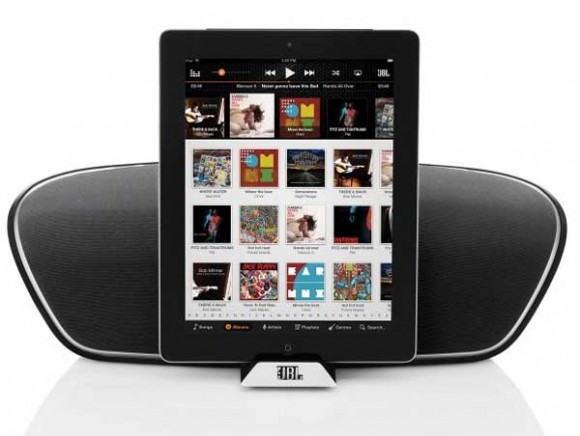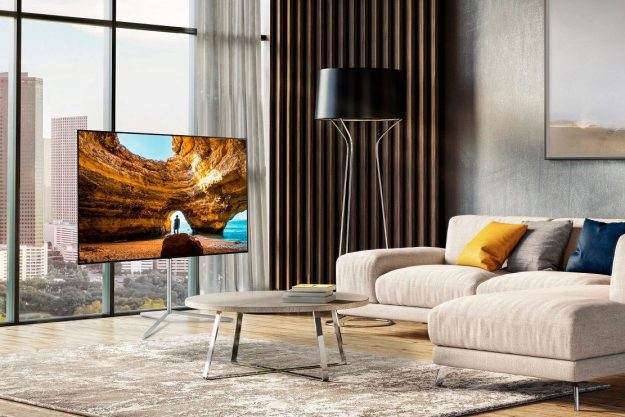
Just one day after we wrote up Grace Digital’s NOT for iPhone dock, it seems we’re back to business as usual. The new JBL OnBeat Micro and OnBeat Venue were crafted specifically for iPhone users (5 included) and JBL’s promo literature is emphatic about it. The Micro claims “the iPhone 5 has never sounded better,” while the Venue boasts that it will “turn your iPhone 5 into an entertainment powerhouse.” Based on our experience with JBL’s OnBeat Extreme, we’re inclined to believe the hype until we’ve heard for ourselves. Let’s take a look at what these two new speaker docks have to offer.
- OnBeat Micro – Well, all we really know about the Micro’s audio at the moment is that it runs on 2 JBL full-range transducers, and that it sports a 110Hz – 20kHz frequency response, which means it won’t do much for the deepest bass tones — not a huge surprise considering its diminutive size. Furthermore, it runs on four AAA batteries, which support it for five hours of un-wired play-time. The lack of rechargeable battery here is a bit troubling, and you’ll have to consider the cost of battery replacement when evaluating its price tag. What is nice – very nice actually – is that the Micro (along with the Venue) is the first-ever dock, equipped with a built-in lightning adapter. It also has a built-in USB input. The more connectivity options the better. Suggested price is $100

- OnBeatVenue – The Venue – designed with soirees in mind – produces 30 watts of amplification power, which should be enough to provide audio for parties hosted in your average living room. It also supports Bluetooth, so you don’t have to cut away from a conversation every five minutes to change the playlist.. The Venue – like the Micro – runs on two JBL full-range transducers. It’s frequency response, however, is a notch above, spanning the full range of human hearing. The dock also comes with a built-in lightning adapter (we could get used to this). Suggested price is $200
We have to say, we’re a bit more excited about the Venue, thanks to its potential for fuller sound. The Micro, on the other hand – with no rechargeable battery or Bluetooth connectivity – seems only halfway dipped into the portability pool. Either way, it’s good to see some Lightning-equipped docks coming available for the holidays.


